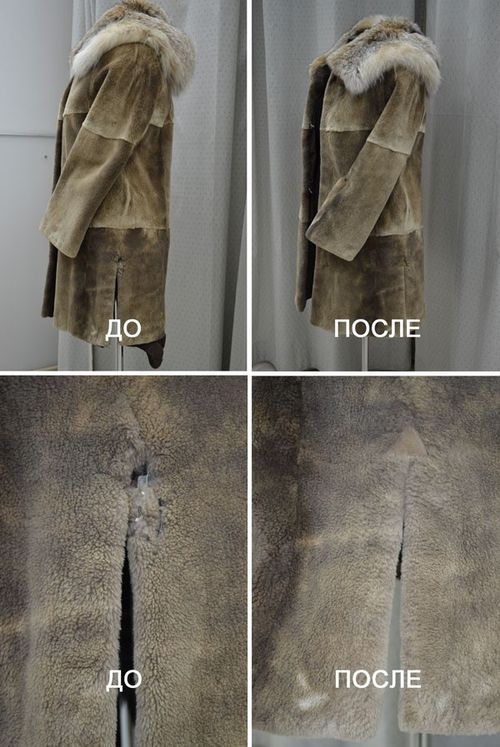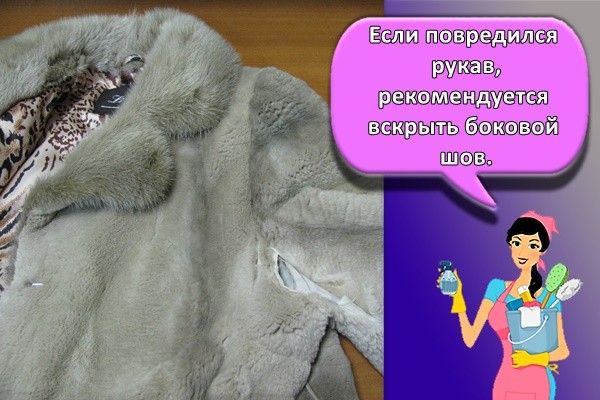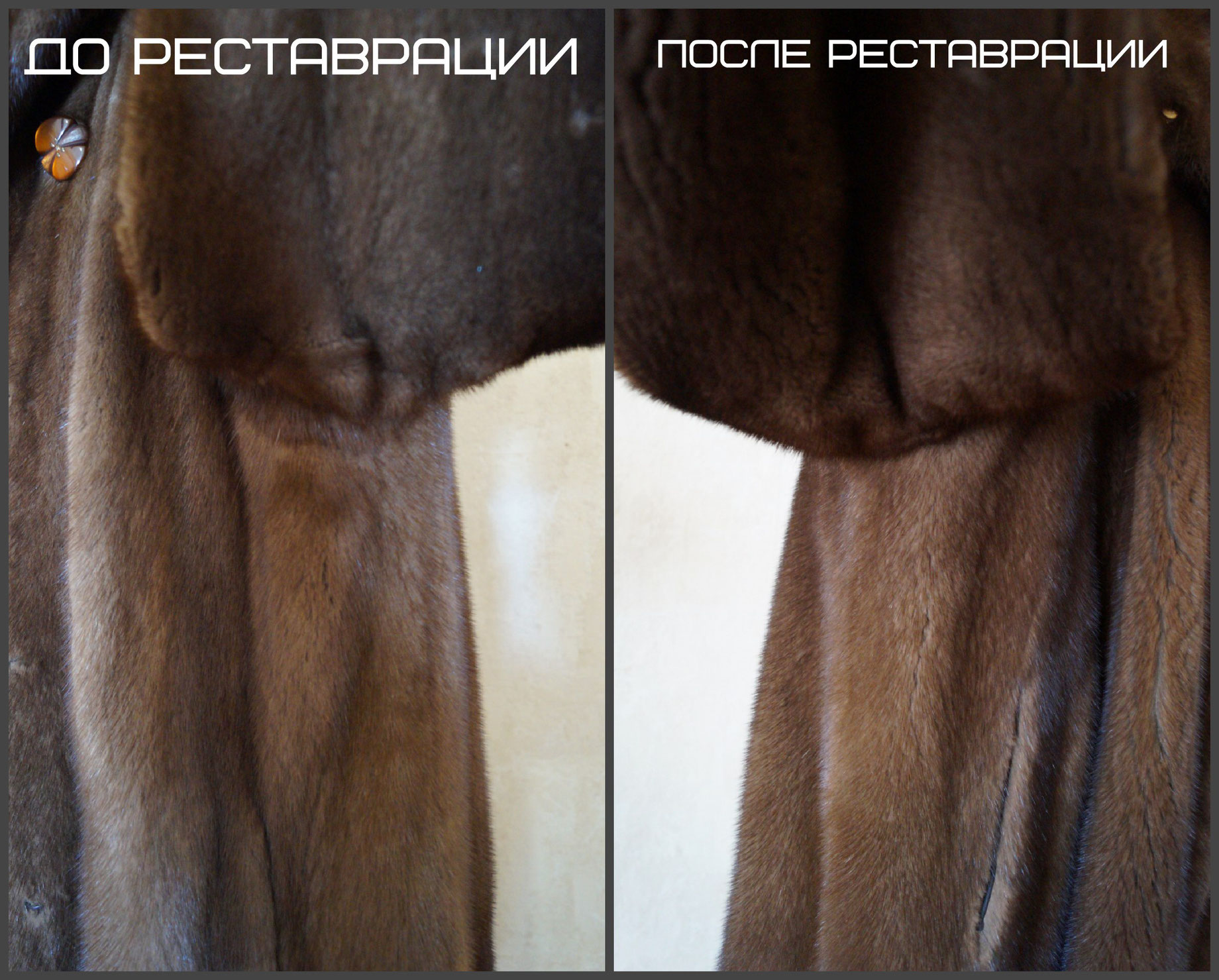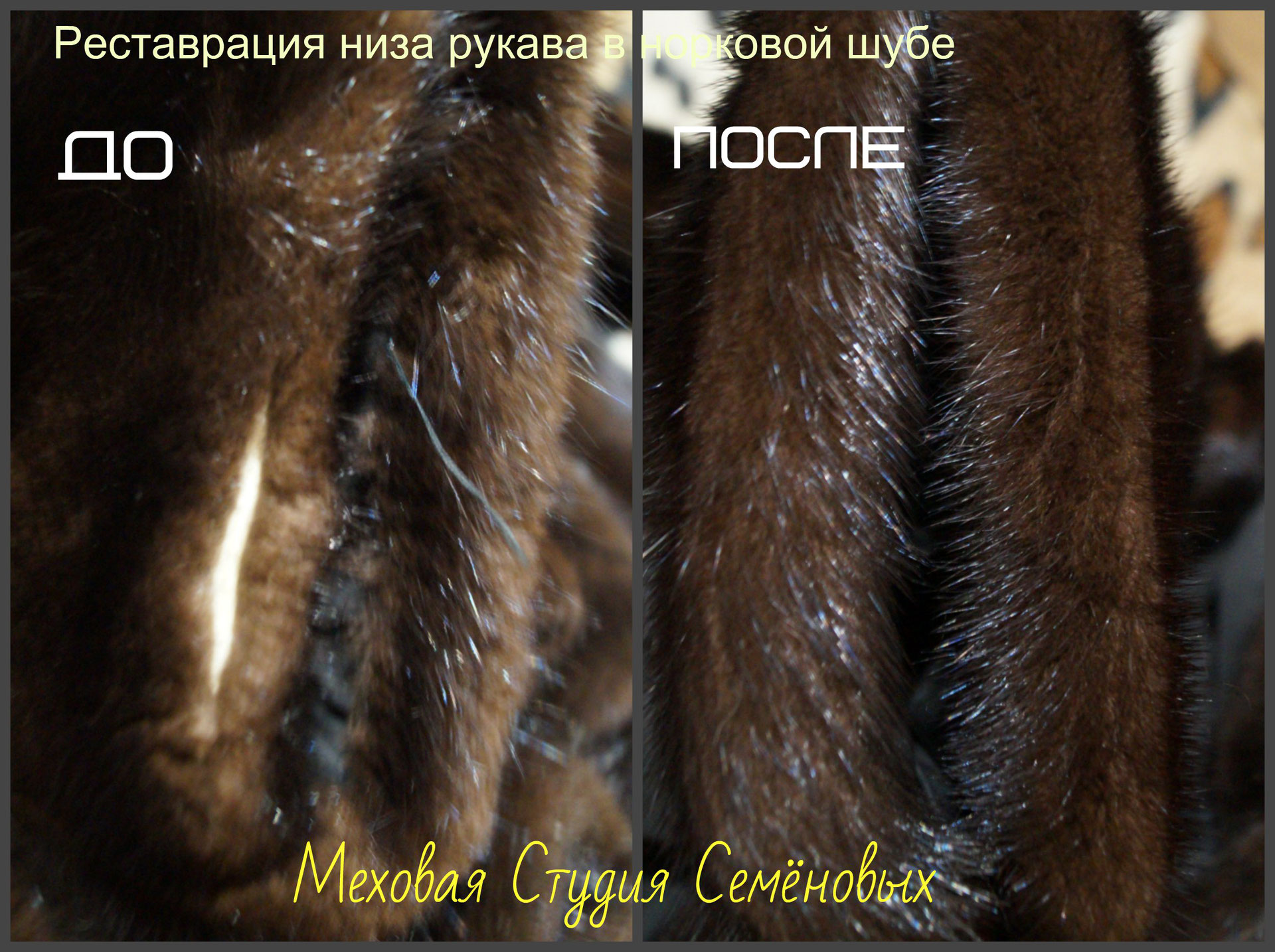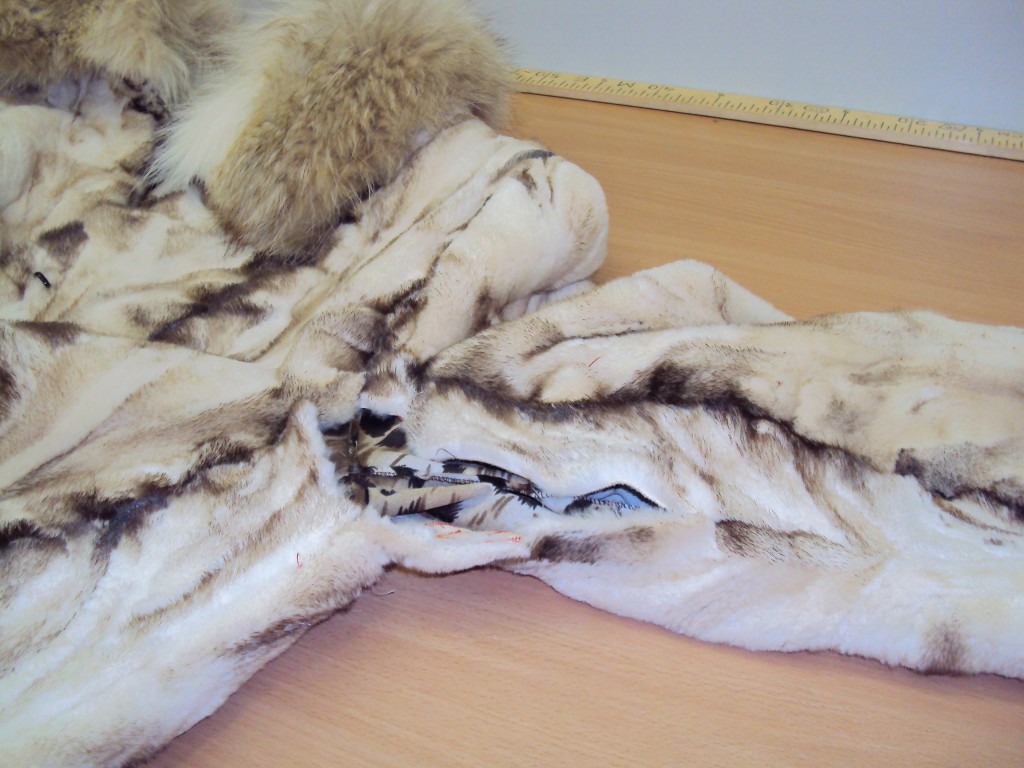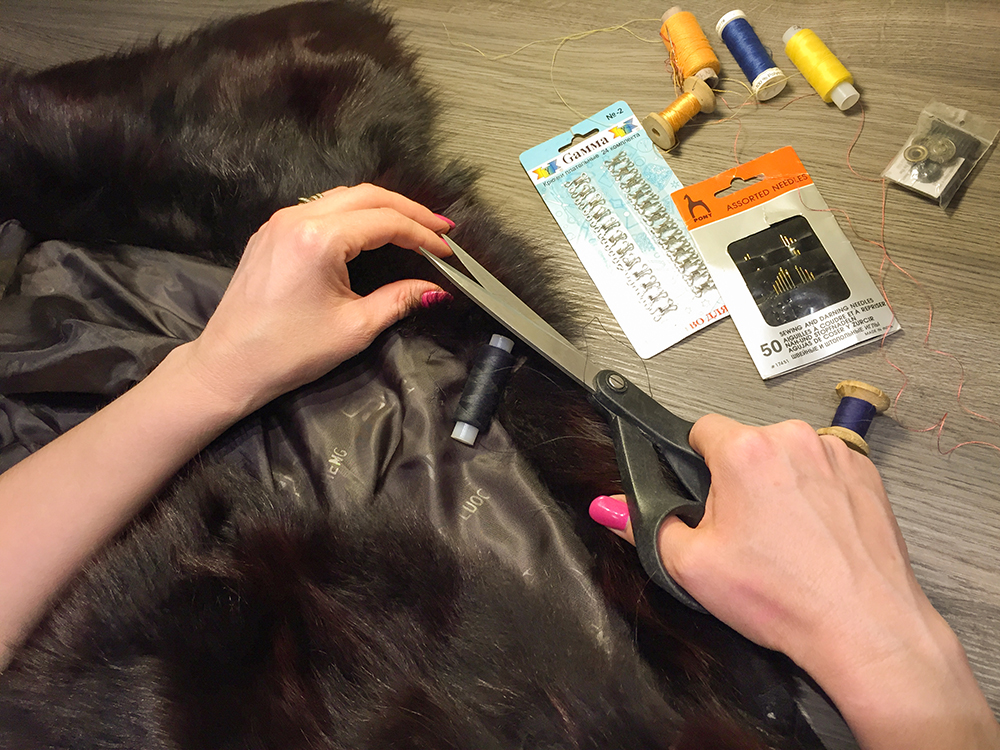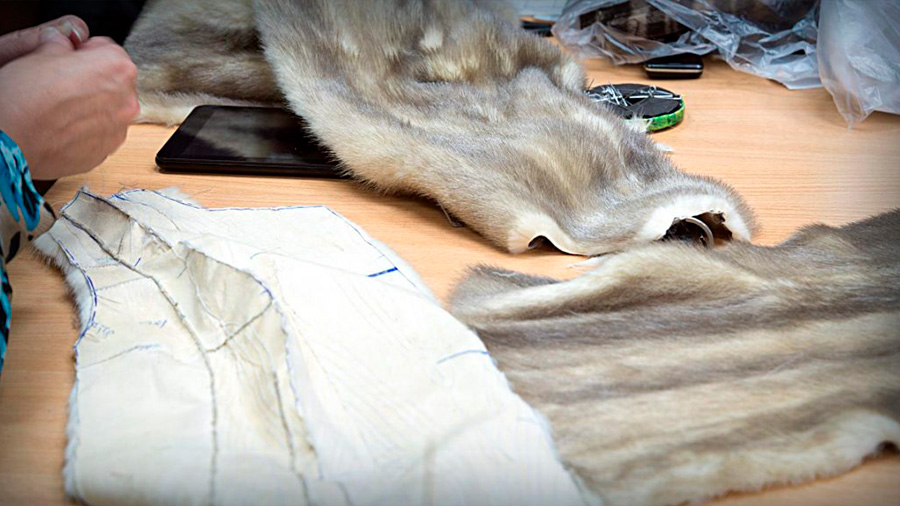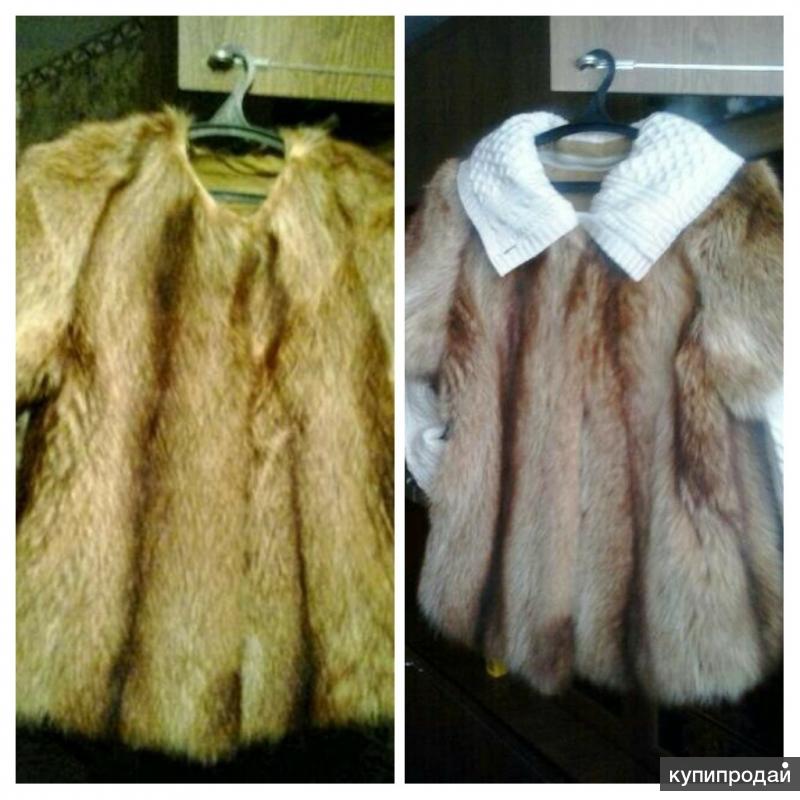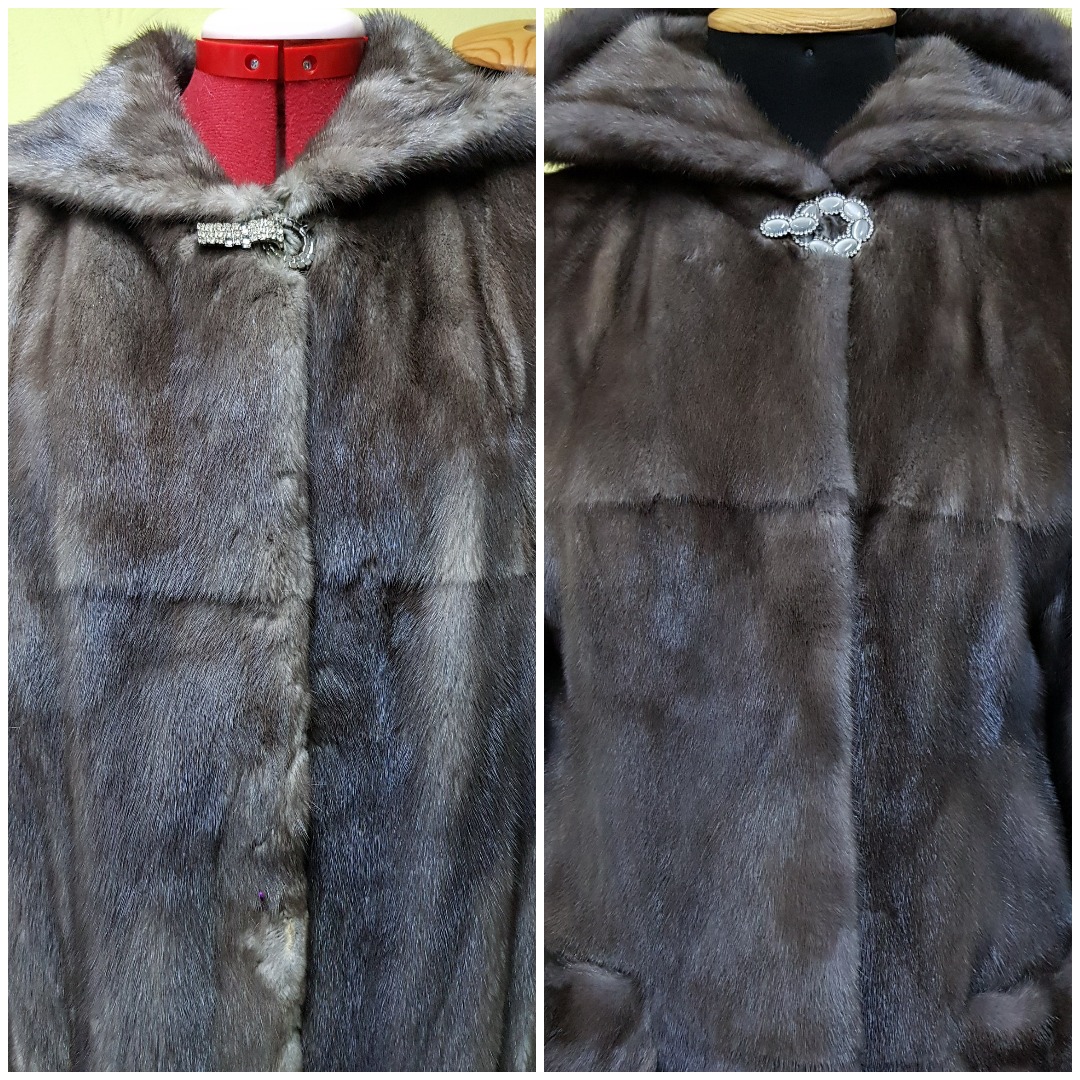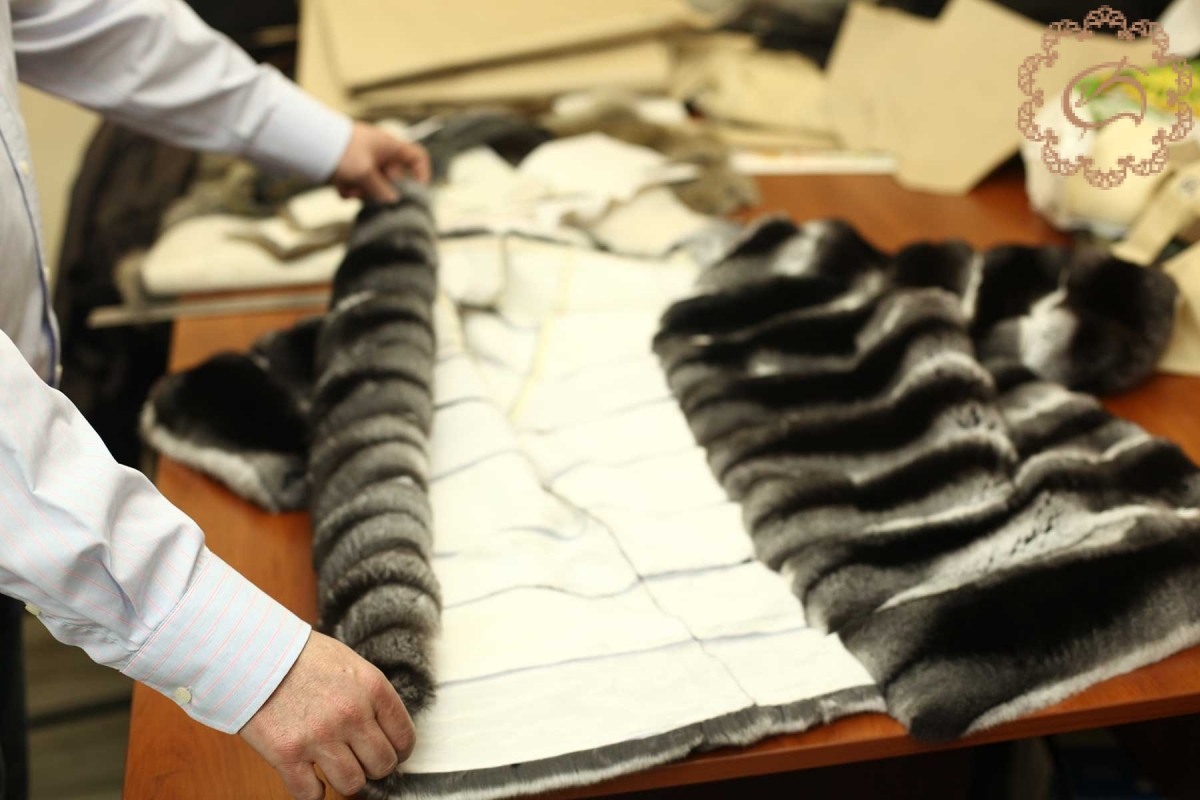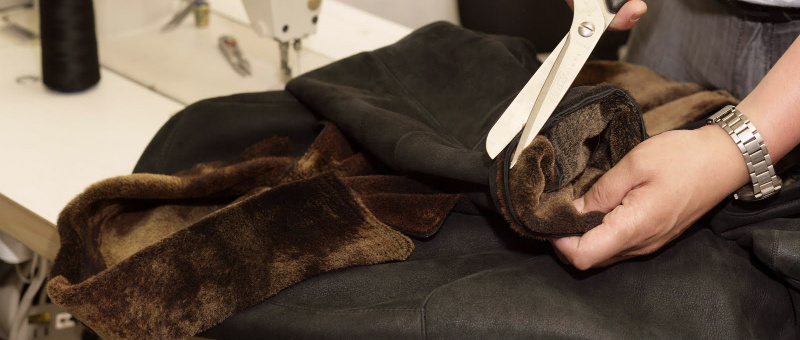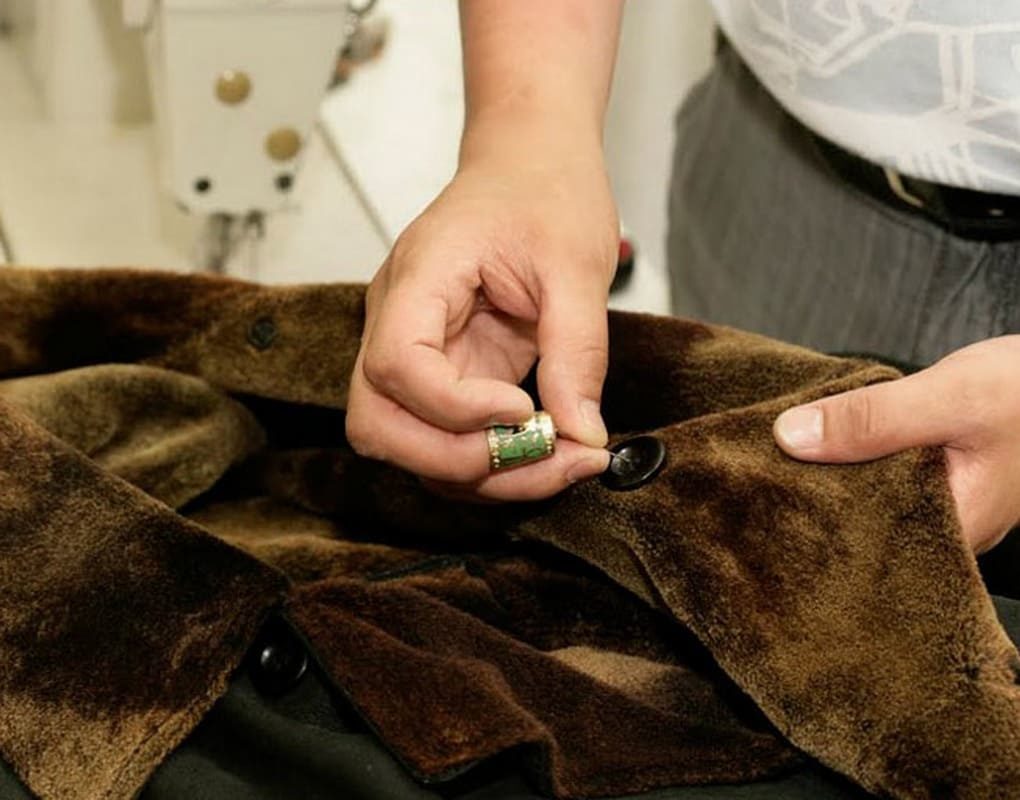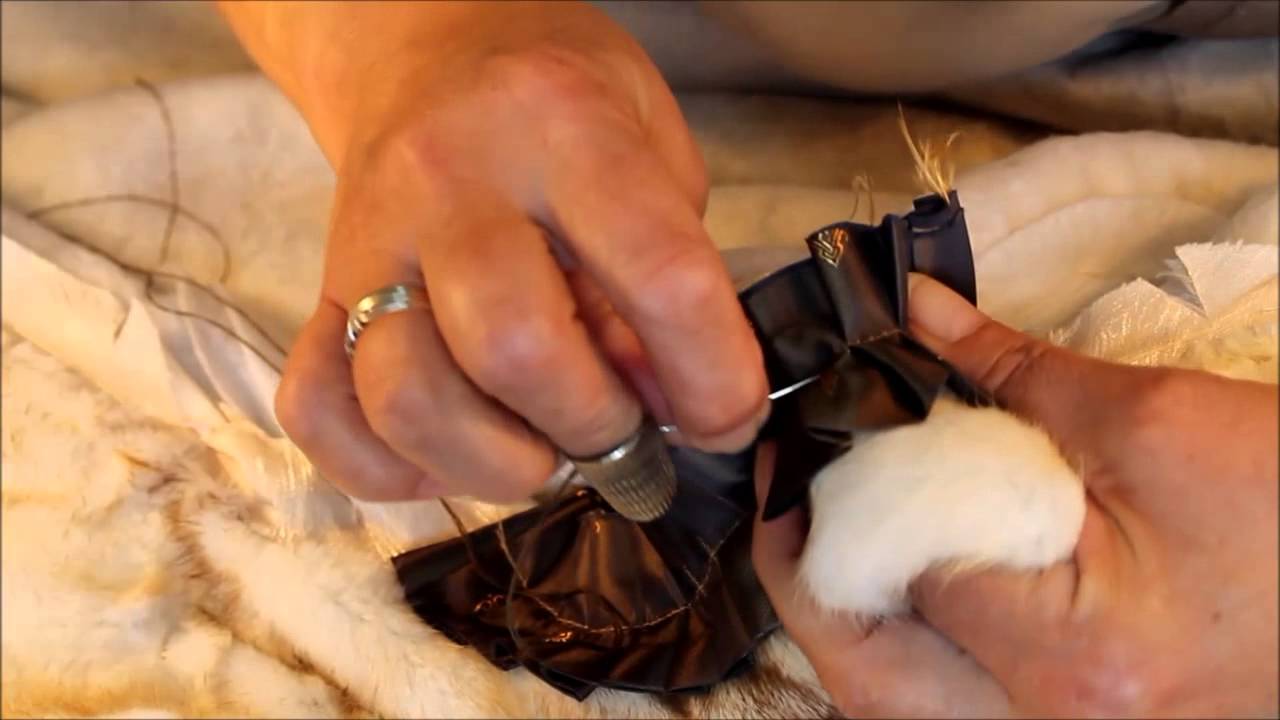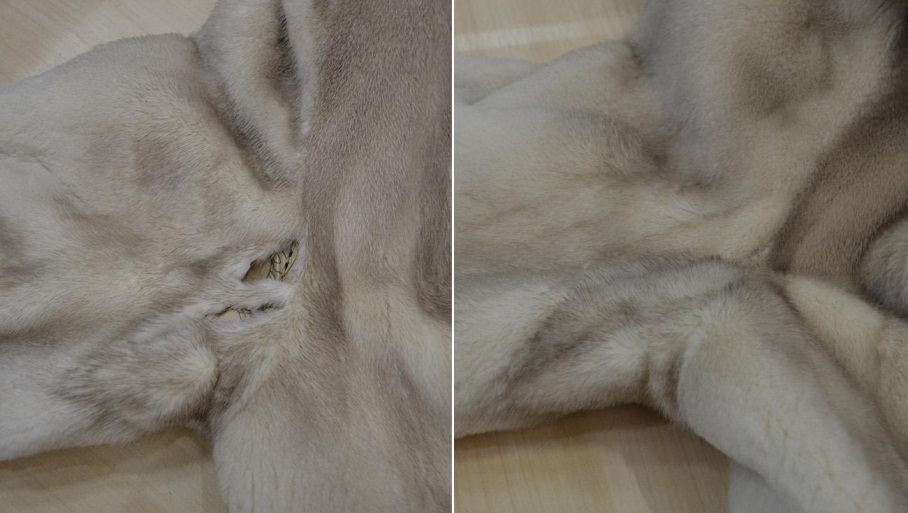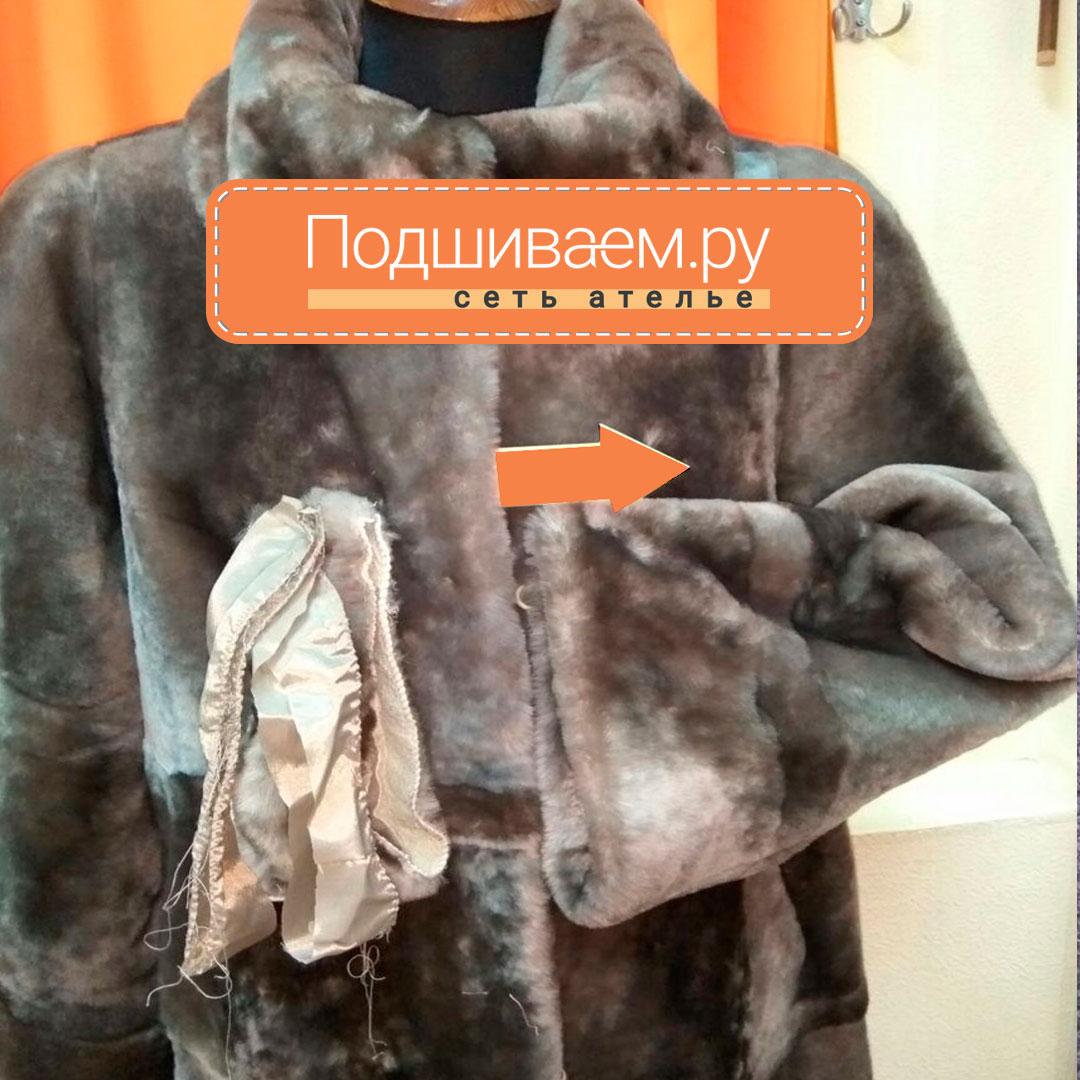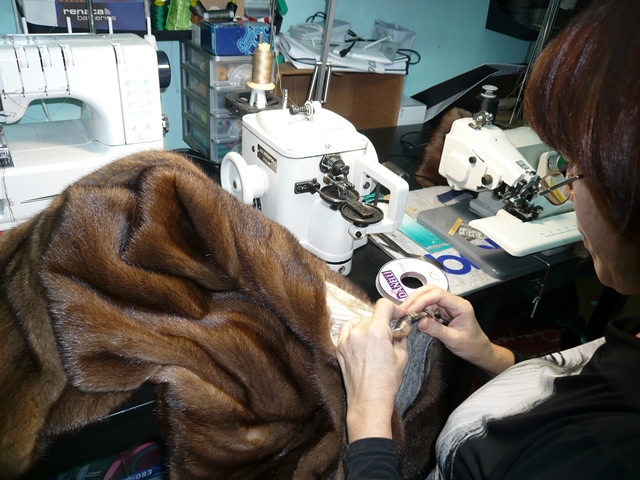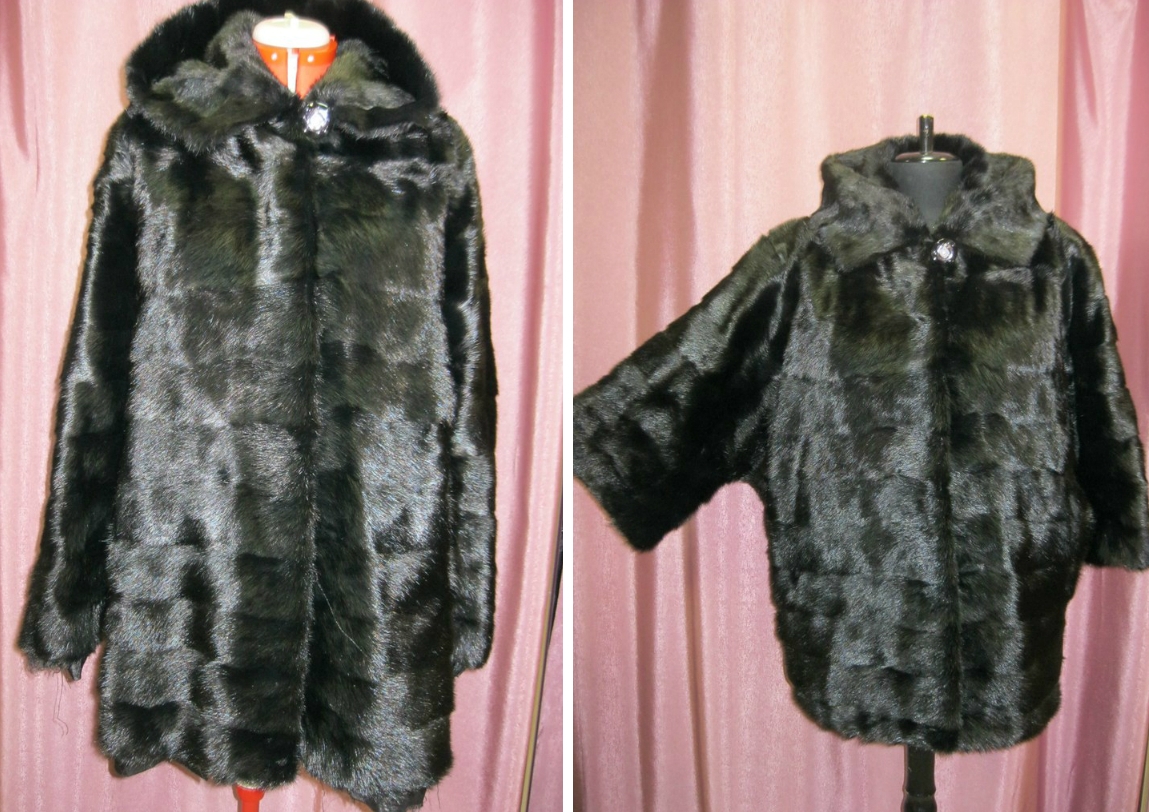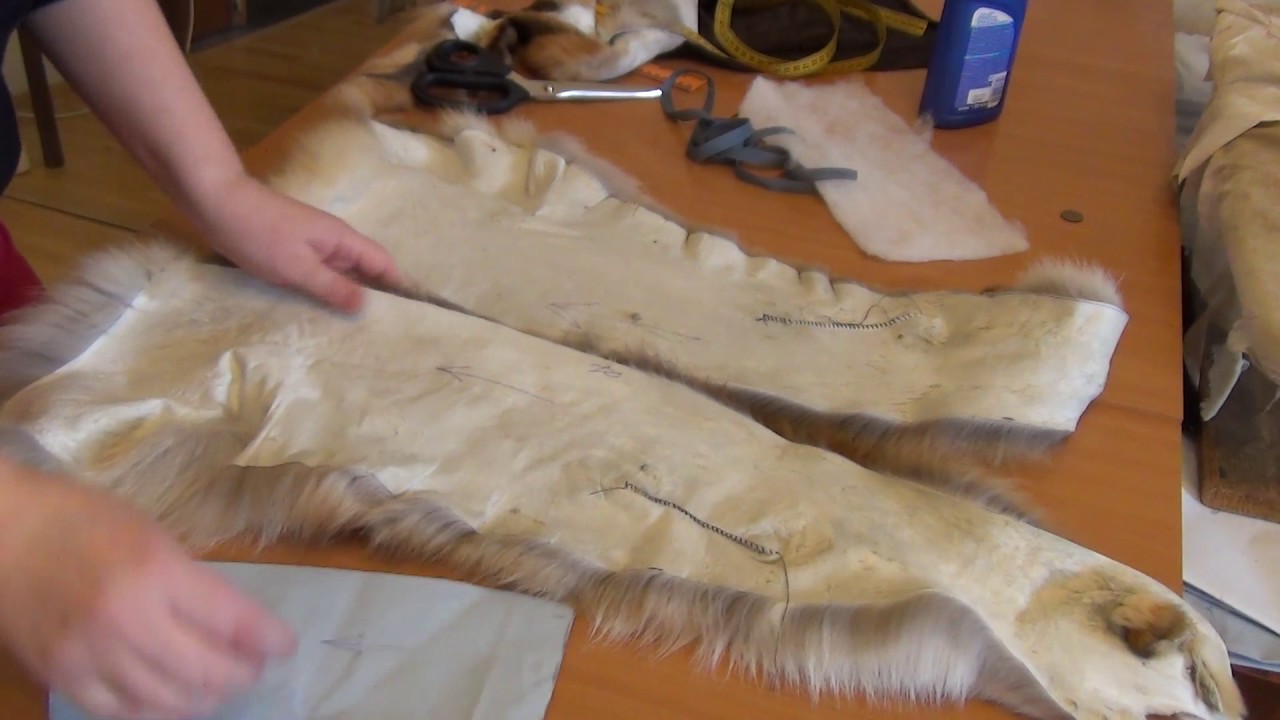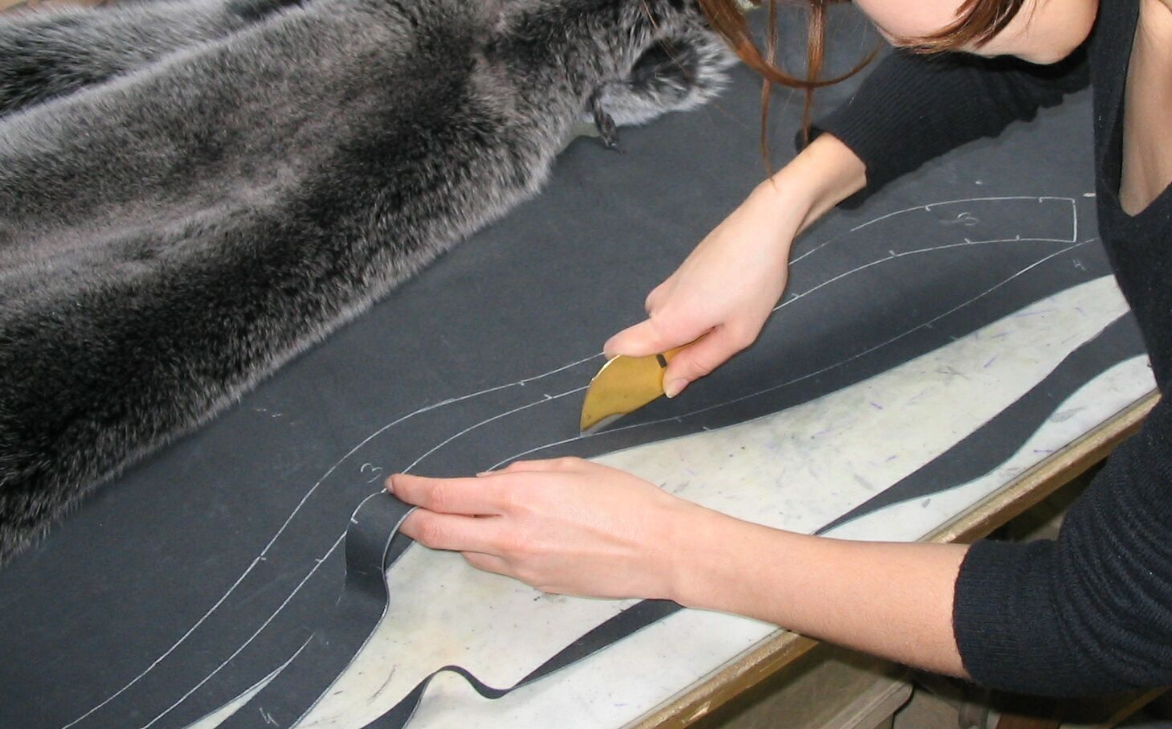Atelier or restoration of fur coats at home: what to choose
Services for the restoration and alteration of fur products are often offered to be performed directly at the home of the master. Can you trust them? Of course, if there are recommendations from friends or acquaintances. But you should always remember that you are giving an expensive item into the hands of a stranger. Of course, not all home-working furriers are scammers, but some of them are self-taught, who need nothing to ruin their fur coat with their inept actions.
Below is an example of an unsuccessful restoration of a fur coat (pictured), which was entrusted to such would-be masters.
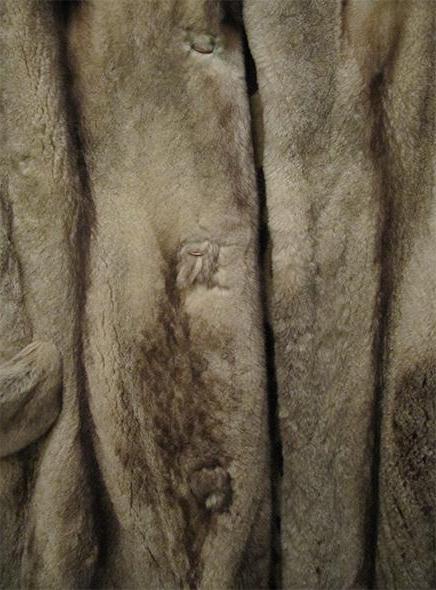
In the atelier, it may also not be quite successful to refresh the fur coat. But the customer will have a receipt, a prepayment check, sometimes it is indicated in the receipt what exactly they will do with the thing. All this evidence can be taken to court if the product was damaged.
Learning to furrier
The next problem, indicating the need to restore the mink coat, is the loose seams. Most often it occurs in the chest area, on the back or in the armholes of the sleeves. First, we deal with the lining: if it is stitched, it must be carefully ripped off so that we have access to the area in need of repair. Do not use a sewing machine for restoration, it is advisable to sew up the gust with a furrier's seam (photo) manually, for this practice on an inconspicuous area. The main thing, when sewing, make sure that the fur does not fall into the seam, and also adjust the tension of the thread so that the seam does not turn out to be excessively tightened. At the end of this complex operation, sew up the lining, and you can be proud of yourself - after all, you did everything yourself!
Shabby fur accentuates the old age of your fur coat. You will have to put a patch in place of the scuff. For these purposes, you can use a piece cut from a hem, pocket, belt or hood. You can also choose a new skin of a suitable color and nap. Using a sharp blade, carefully cut, trying not to touch the pile, the patch of the required size. At the end of this jewelry operation, it is necessary to tap the junction of the main product and the patch with a wooden mallet through the paper, which will allow aligning the old and new fur and leveling the place of restoration (photo).
A very unpleasant and insurmountable problem at home is the split of the fur coat, when the villi of the fur on the collar, sleeves, hood diverge to the very flesh. This can be said to be a natural defect that can occur even with a new mink model. At home, you can cope with this problem if you have a household steam generator, but it is better to take the fur coat to a repair shop after all.
Become a fashion designer
When purchasing an expensive mink model, you expect that you will wear it for a long time, but a capricious and changeable fashion interferes with a measured life, or you are simply tired of your old, but still quite new, model, and you decide on radical changes, for example, shorten it. First you need to decide on the length, for this put on a fur coat, fasten it and tie a belt, carefully recover and use tailor's pins to pin the hem.
Measure the required length along the entire hem of the fur coat, do not forget to leave 4 cm for the seam allowance, then, using a sharp blade, carefully cutting with progressive movements, cut off the excess. Fold over the fur and sew over the edge, aligning the right and left bead
It remains only to sew on the lining and straighten the fur that got into the seam (in the photo before and after).
And at the end, a few tips on how to care for a mink coat so that you do not have to restore it for as long as possible.
- Avoid wearing fur in wet weather to prolong its lifespan.If it does get wet, dry it away from heating devices, preferably in a natural draft. In summer, ventilate the product regularly in the shade.
- Protect fur from moths, as natural fur infested with moth larvae cannot be restored. Currently, there are many ways to protect yourself from harmful insects: from the banal orange peel and geranium to industrial sprays and solutions. Well, and the proven old grandmother's method - naphthalene - is better left in the past, since you will get rid of the moth, but you will not be able to weather your favorite fur coat from the fetid odor.
- Store the fur coat in a special cover, in a spacious closet, so that the fur does not come into contact with the walls of the closet, other clothes and does not get jammed.
The use of such simple tips will preserve the appearance for a long time and save you from the need to restore your fur coat with your own hands or seek help from professionals.
Defects on fur products
When is the restoration of a fur coat needed? This is indicated by the following signs:
- the edges of the sleeves frayed;
- wipe the fur in the pockets and at the bottom of the product;
- the fur coat is torn (along the seam or along the skin);
- the lining is worn out;
- bald patches appeared in any area;
- the accessories are damaged: buttons, hooks, loops have been torn off along with small areas of fur.
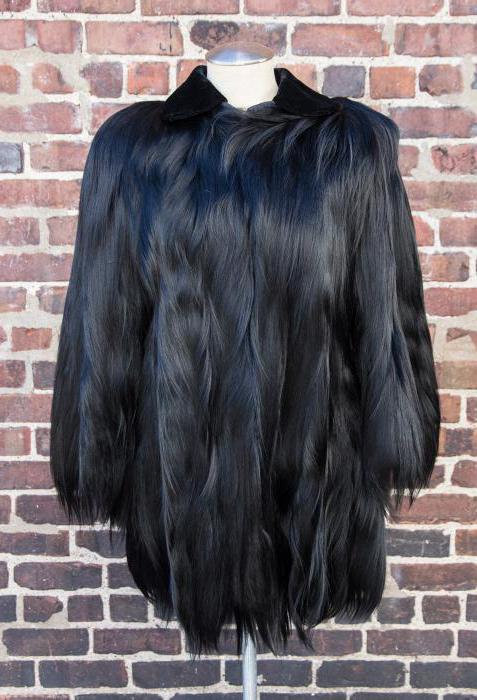
In addition, the restoration of a fur coat can include a change in color, style, length, fit or complete alteration.
Often such work involves the use of additional materials: similar fur for inserts, or completely different - for a new collar, sleeves, or trim. All of this affects the cost of rework. The final price of repairing a fur product can be found out only when the master examines the thing and determines the degree of wear, as well as listens to the wishes of the client.
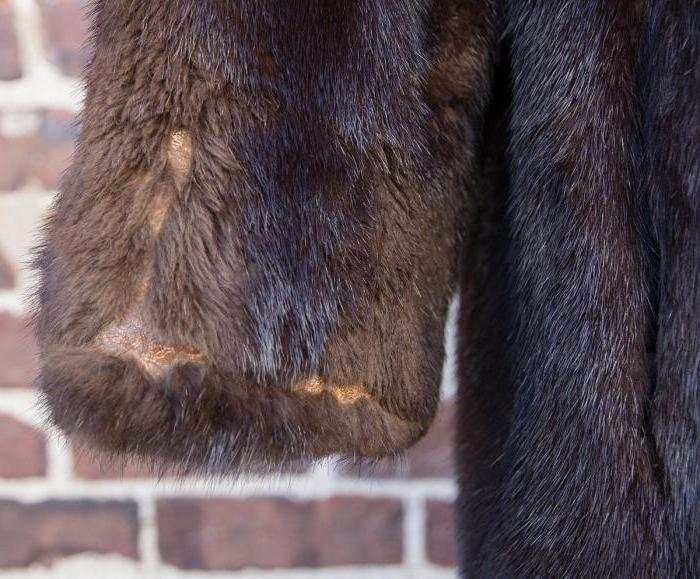
How to repair your fur coat at home
If you accidentally tore or spoil your fur coat, then it can be repaired free of charge, but only if the warranty period specified in the coupon has not yet expired. If it has already come out, then you will have to pay from your pocket for its restoration.
You should not take on the repair of a fur coat if you do not have the skills to work with fur and you do not understand anything in tailoring, otherwise you can ruin the product and it will be problematic to restore it.
In addition, to work with fur, you may need a special tool that the atelier has, but which you do not have. This is a sewing machine, a special knife and scissors.
Sew a button to the fur coat
To sew a button to a fur coat, take thin paper and place it under the button. This is necessary so that the pile is not sewn along with the threads. After the button is sewn on, the piece of paper can be torn off.
Do not sew the button close to the skin. Leave at least 2-3 mm. To sew a button to a fur coat, you will need threads 60-80.
Sewing a fur coat at the seams
As a rule, people bring a fur coat for repair if it is torn at the seams. Such a nuisance can occur if the fur coat is small. You can fix this problem yourself.
If the seam is slightly open, it can be joined with a buttonhole seam on the wrong side of the garment under the lining. Sew up the seam by straightening the fur outward. To do this, you need cotton threads # 60-80.
If there is no way to sew a seam from the inside out, then you will have to sew it from the front side.
If the skin is torn on the fur coat, then you do not need to sew it up. In this case, the skins are glued together. So that the joints are not noticeable, attach a piece of gauze from the seamy side, grease it with glue so that not only the gauze is saturated, but also the flesh. This method of gluing the torn skin of a fur coat will allow you to connect the torn parts so that no one will notice them.
What is needed to repair or restore a fur coat
If the thing is to be restored, you need to think about the material for the repair.A long fur coat will make a short fur coat, and there will be enough fur for restoration. Shortening a long fur coat is the best option, since its floors are often dirty and worn out. The "trapezium" model is best suited for redrawing - there is a lot of fur in it, which allows you to fantasize with patterns.
For small repairs, you can take the fur from the underside of the turn-down collar or cuffs, replacing it with natural or artificial leather, suede, or drape of a suitable color. You can choose fluffier fur to replace the collar, cuffs and flooring. You can use a baby fur coat, or buy dressed skins from a fur store. The combination of fur and leather looks good. A fur coat can be transformed by trimming the edges of the sleeves, pockets, and the top shelf with leather strips.
If the fur coat has come apart at the seam: what and how to do
Get to the seam that has come off the wrong side of the garment. If the lining is sewn on, back it up. If not stitched, fold it back. Carefully bring the edges together with the fur inward, and sew along the entire hole with a furrier stitch. This is done like this:
- pass the needle through both edges
- stretch the thread
- then throw the needle over the cut
- stick the needle back into the first puncture site
- tighten the thread.
The next puncture should be at a distance of 2-3 mm from the side opposite to the first (from the side from which the needle came out). Repeat the stitch shaping process. This will result in spacing stitching on both sides. After that, sew up the lining (if it was sewn on) and comb the fur.
Attention!
- In the process of sewing, make sure that the fur flaps do not move relative to each other.
- Avoid bubbles or cavities.
- Work on a hard surface.
- Control the direction of growth of the pile in the process of self-repairing a fur coat. If you can keep the natural pattern of the fur, no one will guess that the fur coat was sewn up.
If the fur coat has dispersed at the seam after a short time after its purchase, then, most likely, you have been sold a low-quality product. In this case, try to first contact the store with a demand or return the money or change the product. It is better to demand the money back, since the whole batch of fur coats most likely turned out to be of poor quality.
The product has torn in the area of the sleeves or chest - what should I do?
On the chest, the fur coat may tear due to the fact that the model is too narrow for you. In this case, you will need to expand it also with additional fur. If the sleeves and armholes are torn, then several options are possible. First, peel back the lining and assess the damage. If the seam has parted evenly, it is easy to fix it with a thick sewing needle. In the event of uneven breaks, a patch will have to be applied. If the fur "floated", i.e. the edges of the gap are torn and uneven, and the reason for this is the narrow model that is not suitable for you, then such a product will have to be altered. Alternatively, cut off the top of the fur coat and alter the product at the expense of the bottom. But keep in mind that in this case it will become much shorter. By the way, it is not recommended to perform such work on a typewriter - it is better to do it manually.

Signs of need for repair
Clothes made from natural fur have many advantages. It is distinguished by its attractive appearance, provides outstanding comfort and reliably protects from the cold.
A high-quality mink coat can be worn for at least 10 seasons. However, sometimes an expensive product deteriorates in just a few months. Compliance with certain recommendations for the care of clothes will help to avoid this.
The reasons for which there is a need to repair the product include the following:
- Lint loss. As a result, creases and bald spots appear on the surface of the clothes. The reasons for such problems are the washing of the product, the constant influence of ultraviolet radiation, the use of an iron. Also, the use of aggressive chemicals for cleaning, the use of a hair dryer to dry the product and damage to the fur by moths leads to bald spots.
- The appearance of holes and gaps. Various jewelry - hairpins, pins or brooches - lead to such problems. Also, a fur coat may tear due to a mismatch in the size of the product.
- The appearance of deformations and abrasions. This is due to carrying bags on the shoulders. Also, deformed areas appear due to travel in a car or full public transport.
Our quality assurance
We give a guarantee for our work. If during the season the loop or hook that we have installed breaks off again, we will replace them free of charge. If the seam breaks, our craftsmen will eliminate the gap out of turn. We would like to note that there have not been such appeals yet.
We guarantee high quality of clothing repair and our other services. The quality guarantees at Mobile Tailor are:
- work experience over 10 years
- modern sewing equipment made in Germany, Switzerland and Japan
- highly qualified masters who already have a regular clientele
- our clients, including well-known brands, for example, a chain of stores "Jeans Symphony", Lee-Wrangler, Modis, "Familia"
- our responsibility to landlords.
You can familiarize yourself with the guarantees for the safety of products and guarantees for the work performed in this section.
Review
Restoration of fur coats “Mom gave me her fur coat. The fur coat was expensive, mink, but already clearly worn, in some places it was even bald. I decided to try my luck in the atelier. I turned to Mobile Tailor. As a result, I got more than I expected: the coat was cleaned, all bald spots were replaced, the collar was changed, and leather bumpers were put on the pockets. As a result, I am wearing a new fur coat and am happy. Thank you! "Alina, Energetikov Avenue, Ladozhskaya metro station
Review
Restoration of fur coats “It was necessary to restore the sleeves on the nutria fur coat. The fur was greasy and rolled out here and there. I took the fur coat here (to the Mobile Tailor). The furrier turned out to be a great clever girl! Everything was done perfectly. Thanks! It's a pleasure to do business with you! "Daria, Komendantsky Prospekt metro station
Review
Restoration of fur coats “I repaired an astrakhan fur coat at the Mobile Tailor. I thought I'd put it in order and sell it. As a result, it was shortened for me, a hood was sewn from the trimmed fur, the sides were turned with light leather. The fur coat looks like a million dollars. Now I don’t want to sell. ”Svetlana, Komendantsky prospect, Pionerskaya metro station
Help others make their choice - leave your review.
View all reviews
Restoration of fur coats: we offer an economical option
There are two options for the service "Restoration of fur coats".
The first is expensive. In this case, if, for example, the fur on the sleeve is rubbed, exactly such a fur is selected and the worn area is replaced with it. In other words, the product is restored with new skins, which must be purchased.
We would like to note that our company does not have a stock of skins, which you need to replace the skins are purchased from specialized organizations.
The second option is economical. This is when the fur coat itself becomes a "donor" of fur. If, for example, the collar has lost its original appearance, then it can be restored by taking the fur from below. The product will become a little shorter (while its style will not suffer at all), but this repair option will cost much less. It is the economical restoration that the Mobile Tailor atelier offers.
Fur cleaning before starting work
It is best to clean the fur before you start work.
Thick, short-haired fur can be vacuumed gently. Long matted fur can be brushed gently with a wide-toothed comb
Here are some safe ways to clean fur:
Take potato starch and sprinkle the product with it. Do the same hand movements as if you were washing regular clothes. The time for such a dry wash should not exceed 10 minutes. Shake off the starch with vigorous movements, remove the remains with a natural bristle brush. This cleaning method is suitable for any color of fur.
Prepare a solution of ammonia, hydrogen peroxide, and pure water: add a teaspoon of peroxide to a glass of water, and 2-3 drops of alcohol. Fill a container with a spray bottle with a cleaning agent and spray the fur at a distance of 10 cm. After processing, dry the fur at room temperature.
Take in equal parts alcohol (or vodka), vinegar (table, or apple cider), and water
Apply the composition to the pile with a brush, blot gently with an absorbent cloth. Dry and comb the fur.
What are the most common damage to fur products?
As a rule, mink coats faithfully and reliably serve their happy owners for fifteen to twenty seasons. However, due to insufficient observance of the rules for storing these products or some other unfavorable factors, there is a high risk of premature occurrence of unwanted damage and defects. The most common and common are the following types of problems:
- divergence of seams on a fur product;
- the appearance of characteristic abrasions in the area of sleeves, collars, pockets;
- tears of the skin in various parts of the mink coat.
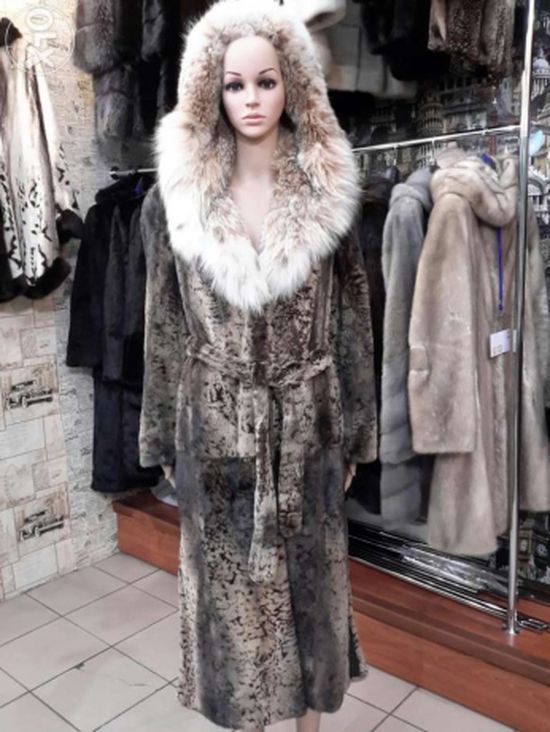
All these types of damage are very serious and therefore require a thorough restoration - for example, a complete overlap and a change in the cut. By carefully looking at the photos and videos, you can easily learn how to restore a fur coat. The main thing is to have the necessary high-quality tools at hand and not be afraid to modify your usual product. After all, time does not stand still, and completely new fashionable models and styles of mink fur coats constantly appear.
Of course, in order to correctly and efficiently update a fur product, it will take a lot of time, as well as to be careful with every movement. Thus, it not only does not lose its charm, but it can become even more attractive.
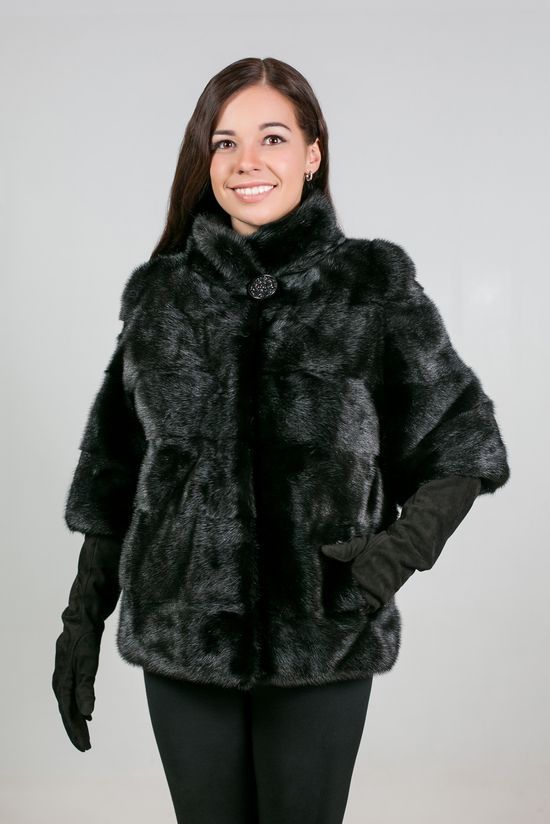
Ways to eliminate surface damage
Unfortunately, it often happens that a beautiful mink coat, after just a couple of months of intense wear, can lose its original charm. Fur pile has the property:
- Roll down;
- cuddle;
- acquire a yellowish or dark tint.
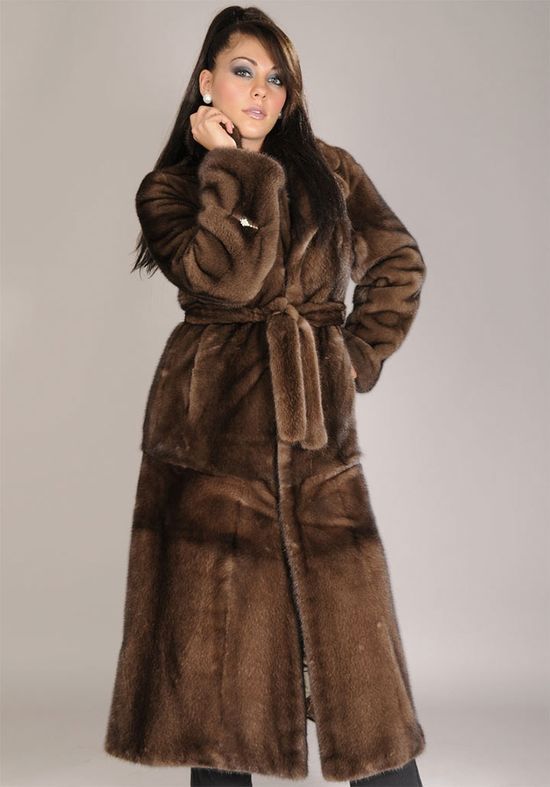
In such situations, you should not despair, since all the listed disadvantages are not at all difficult to eliminate with your own hands at home and to restore the fur coat in a quality manner. What should be done to make the result happy with its effectiveness?
- It is recommended to intensively but carefully comb the dusty and slightly wrinkled areas of the fur product using a special brush.
- For heavily matted fur pile, use a wide-toothed comb. It must be made of natural wood.

- If some fur areas are too dirty, to clean them you need to use a brush that has been previously soaked in a mixture of 1 liter of warm water and 1 tablespoon of washing powder.
- Another option for an effective cleaning agent is a mixture of natural starch and high-quality refined gasoline. It will help you quickly and easily update the appearance of the product.
- For cleaning dark fur shades, it is recommended to use warm and clean sand - while it must be perfectly dry.

Perfume traces can only be removed with ammonia.
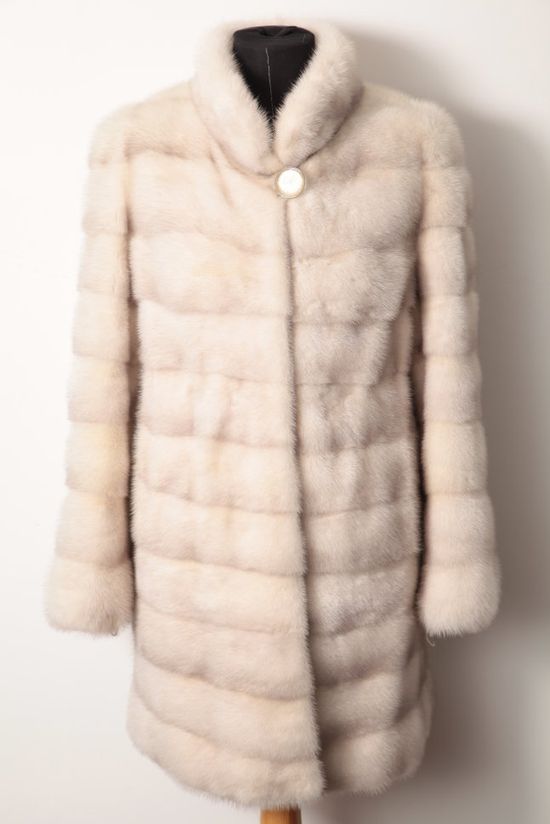
How to update a mink coat by completely changing its cut
If all of the above methods for restoring a mink coat turn out to be powerless, and the damage is truly serious, the best solution would be to change the cut of this product. It is so very difficult to restore a product, so it is hardly possible to cope with this on your own at home - this requires professional experience and special equipment.The only thing that you can do with your own hands is to turn a well-worn long mink coat into a short fashionable vest.
Depending on the degree of wear and tear of the fur product and the nature of its damage, you can always choose the most optimal method of restoration. After all, renewing your favorite fur coat is, in any case, the most affordable opportunity to become the owner of a completely “new” item of clothing.
Repair of a fur coat in the studio: a list of services
Atelier for fur and leather products specializes in providing services for the repair of leather and fur items. In the atelier, you can sew, paint, comb, re-face, shorten, alter, fit, make inserts from other fur, clean, adjust the sleeves.
What type of activity does a fur atelier carry out:
- sewing fur clothing from natural and artificial materials;
- repair and restoration of fur clothing and sheepskin coats;
- overlap fur coats and other fur products
Also in a fur atelier you can:
- make loops;
- adjust the length of the sleeve;
- fit fur clothes to the figure;
- replace the lining;
- alter the fur coat;
- shorten the lower part of the sleeves.
- shorten the hem of the product;
- replace the hem, cuffs, collar;
The restoration of fur products involves the following approach:
- You can change the style of clothing, remove scuffs and flaws on it that have formed as a result of wearing the product.
- Winter outerwear can be completely re-cut by fitting it strictly to the figure.
- Fur atelier masters can repair or completely replace the details of a fur coat: collar, hem, hem and sleeves, sides of pockets.
Often clients turn to the atelier with a request to restore the bottom of the hem of the fur coat. This is one of the most problematic areas of a below-the-knee fur coat. In winter, in big cities, street paths are sprinkled with special chemicals and salt, which makes natural fur quickly deteriorate.
Some ateliers offer dry cleaning services for fur and leather products. If you want your fur coat to look like new, this procedure is a must.
The product can be re-cut in whole or in part. As a rule, in order to hide visible defects, the fur coat needs to be altered and its style changed.
From an old fur coat, you can make a new one by completely redrawing and altering it. The new fur coat will no longer have those flaws that the old one had. The most important thing is that in the atelier you only have to pay for the work, because the material is yours, and your old product is used as its quality.
overlapping fur coats in the autumn-winter period will cost more than in spring or summer.
When the fur coat is cut, its collar, sleeves, hood, cuffs, pockets and other details are completely redone. Therefore, the new fur coat may be radically different from the old one.

So that you can imagine how the new product will look like, the atelier's masters draw a sketch, and also make a model of a fur coat, which you can try on. If you want to change or add something, you can express your wishes in the fur coat atelier, which will certainly be taken into account.
The advantage of this approach is that the new clothes will be completely tailored to your figure. Also, if you have another fur item made from a different fur, you can use it to combine. The following combination of furs looks very beautiful: mink-lynx, astrakhan fur with a fox or arctic fox, raccoon.
Therefore, we do not recommend that you get rid of a boring fur coat, which can be used not only as a material for sewing a new product, but also for decorating your home, for sewing fur jewelry and accessories. Also, a fur coat that you do not wear can be returned to the atelier, where you will be paid money for it.
How to restore fur coats from different furs
Buying a brand new fur coat in a store, women often do not understand that they are choosing not only fur, but all subsequent problems. Different fur deteriorates in different ways over time: some things by their nature are prone to one or another change.
For example, fur coats made of a cat, beaver and otter are prone to salting: the fur grows dull due to a greasy sticky coating, which must be removed in a timely manner.
Light-colored things made of astrakhan fur, arctic fox and snow-white mink turn yellow over time. This defect can be eliminated by degreasing and cleaning the pile, and then applying talcum powder mixed with hydrogen peroxide. But it is better to contact a specialist in fur cleaning.

Karakul and goat are prone to wiping. This is especially noticeable on the sides, pockets and cuffs. Karakul fur coats can be repaired with fur inserts (the seams will be invisible) or leather patches. The easiest way to update an item from a goat is with contrasting leather patches.
Nutria and rabbit fur coats are rarely restored. The service life of such things is short (3-5 years, no more), since even with an excellent appearance, the base quickly wears out and breaks. And when you try to alter, it literally creeps under the needle.
The restoration of a mink fur coat is a laborious process. The fur is long, very beautiful and strong enough. In order not to visually reduce the cost of the product, you need to select a similar material in color for repair. However, leather inserts in problem areas are also possible (looks good on a sheared mink), or trimming with more expensive fur, which will look like an ornament, and not like a patch.
Masters work with any material. They can repair a fur coat from a fox, nutria, sheepskin, chinchilla. In cases where there is a possibility of damage to the product due to the strong deterioration of the skin (most often it is nutria, rabbit or marmot), the furrier warns the customer about the risk, and she makes a decision.
How to shorten a mink coat?
Put on a fur coat, button it up and mark a new desired length with invisible ones, measure the resulting piece. Next, peel off the lining and measure the seam line. In no case should you cut the fur with scissors or an ordinary knife - it will crumble, the edges of the cut will be uneven. It is best to use a construction knife for trimming. Then, with a special needle for fur and leather and strong nylon threads, start sewing on the edge, taking into account the allowance, moving from the right side to the left. When about 15 centimeters remain until the end of the work, put on and button up the fur coat again - this way you can smooth the edges (video).
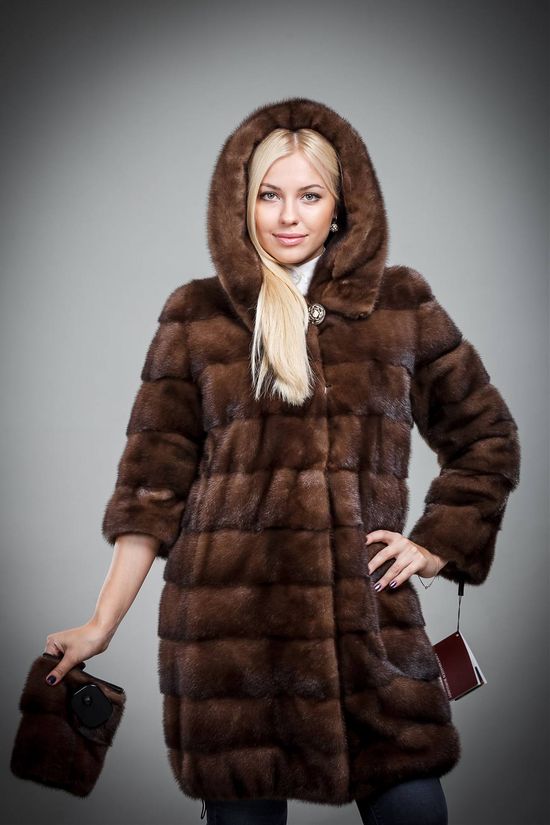
The main rule that you should be guided by when repairing fur products at home is the preservation of the appearance. If the model is changed strongly with a large amount of cut off fur, the overall balance of the product may be disturbed. An incorrectly shortened or narrowed model can "float" on the shoulders, the sides can move apart, the line of the back can shift. Therefore, before starting work, objectively assess whether you can not spoil the fur. And if you see that self-repair can damage the product, then it is best to turn to professionals.
What can be made from an old mink coat?
It is quite possible to give your product a second life. So from long models it may well turn out not even one thing. For example, if you have a product up to the knee, you can shorten it to a sheepskin coat or jacket, and sew a vest from the remaining pieces. The most interesting option can be new products from knitted mink, which you get from scraps. For this, the mink is cut into strips and knitted in the usual way. So practical women of fashion manage to get an excellent knitted mink hat to match, gloves and even bags.

Many people use cut products to create new ones. So, if you have scraps left, then you can order a leather jacket decorated with fur, or sew a fur vest with leather sleeves.
As you can see, there are a lot of options for rework. Therefore, do not rush to part with a boring or outdated model, which, most likely, will not be able to sell profitably anyway. Consider the options and become the owner of new, interesting and relevant products!

